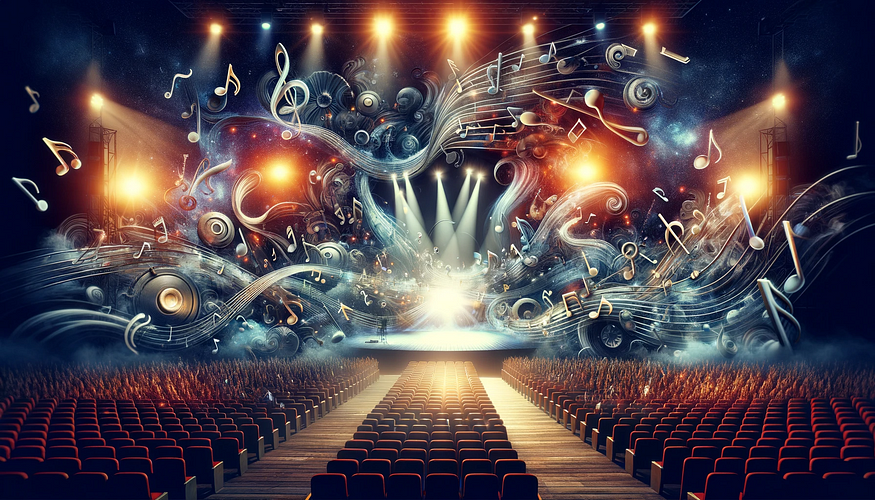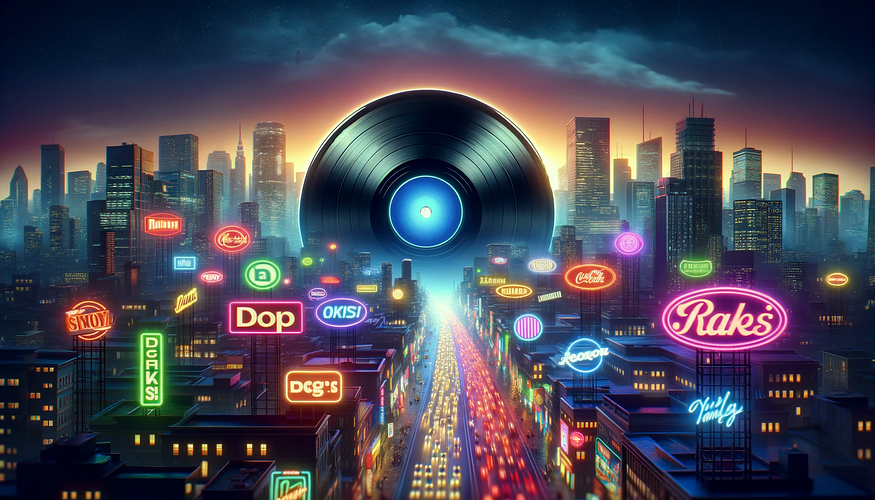- Sound Awareness
- Posts
- 5 Ads That Prove Music in Advertising Can’t Be an Afterthought
5 Ads That Prove Music in Advertising Can’t Be an Afterthought
How music elevates ads to art

An AI-generated image with Dall-E
If you strip away the soundtrack from some of the world’s most iconic ads, what are you left with?
Flat visuals with none of the emotional punch.
Without music, there’s rarely an emotional trigger.
With music, a good ad becomes a cultural phenomenon.
Music amplifies the message and drives engagement.
But hey, I might be biased since I work with music every day as an audio branding consultant.
See and listen for yourself and maybe you’ll realize that music isn’t a luxury but a necessity in the ad world.
Android — Be Together Not The Same
This ad struck me from the very beginning.
Starting with a powerful music piece like the third movement of Beethoven’s Moonlight Sonata (but people only recognize it by the first movement) down to figuring out how they technically modified that freakin’ piano.
This ad is part of a larger campaign that launched around 2015, focused on diversity and inclusivity. The goal was to show that different people could come together using Android thanks to its wide range of customization options.
The monotone ad you see above magnificently illustrates Android’s main message.
In the ad, you’ll see two pianos:
The first piano is a regular one. It has a full range of notes like any other and it’s meant to represent the diversity of the Android platform.
[SPOILER ALERT] The second one is a bit different. I don’t know how they did it but the piano was modified so that every key plays the same note. This represents a less diverse, more uniform platform (are you hearing this Apple? That’s your iOS).
Music wonderfully fun way to show the importance of diversity and individuality. Diversity spices up life in so many ways, while uniformity drains all the fun out of everything.
The most amazing part is that Android delivered its message without ever directly mentioning or showing any Android products.
A powerful visual and auditory metaphor was all they needed.
iPhone 15 Pro — “On with the Show”
This is an iPhone ad that’s amazing and not because of the iPhone itself.
The ad features the 1946 song “There’s No Business Like Show Business”, which is the hymn of show business. It was written by the legendary American songwriter Irving Berlin and it’s known for its upbeat and lively rhythm.
The song was re-recorded to sound like a modern epic score and they had the actors perform the lyrics during the action scenes.
The lyrics talk about the unique thrill of life in the entertainment industry, despite its challenges and hardships. So with the iPhone, they want to show that the device is not just a phone, but a portal to the world of entertainment and creativity.
And it’s also a subtle nod to Apple’s broader role in the film industry. Think of Apple TV+, a gateway to endless entertainment options.
It’s a mix of humor, nostalgia, and history, which makes the whole concept sticky to our minds. The ad wouldn’t be the same without the music.
Google — Parisian Love
This is an older piece, yet its power lies in its subtlety.
It tells a love story using only Google search queries. But it wouldn’t be that effective without the music. A gentle and emotive piano track accompanies minimal visuals to bring life to dull things like searching for info on the Internet.
The story flows through various stages. It starts with a search to study in Paris, evolves into a romantic relationship, and finishes with a family life. Without the sound effects, we’d just be looking at a rapid sequence without really grasping what is happening.
Sound helps us set up the context and follow the storyline.
The message is quiet but clear: Google’s search engine can be part of a person’s life journey in so many ways.
Without any spoken words, the piano piece carries the narrative evoking a variety of feelings along the way: curiosity, romance, longing, and finally joy.
This is how music turns a commercial about a search engine into a touching story about love, adventure, and family.
Chipotle — Back to the Start
This ad is even more relevant today than it was 12 years ago.
It tells the story of a farmer who transitions from traditional farming to an industrialized food production system, and then realizes how messed up it was just to go back to his roots of sustainable farming.
You’ll rapidly realize that it’s Coldplay’s song “The Scientist” but with a twist.
It’s performed by the legendary singer-songwriter Willie Nelson and the lyrics were modified to mirror the farmer’s journey. Nelson’s country rendition is both haunting and moving and without it, the ad wouldn’t create an emotional engagement with the viewer.
I’m somewhat puzzled by the decision to donate the proceeds from this song’s version to the Chipotle Cultivate Foundation, but the core message about sustainable farming is still powerful.
Music once again isn't just a background element, but a driving force to the storytelling.
Lacoste — Timeless
This is one of my favorite ads ever.
It has a special place in my life for two reasons:
I would always see my grandpa wearing this brand and he always bought me their shirts, which I wore proudly.
I created an alternative music version for this ad, which was part of my film score master’s thesis. I was lucky enough to record it with the Bratislava Symphony Orchestra! Here’s my version if you’re interested.
Nonetheless, the original score composed by Max Richter is superb. His music is cinematic and matches the epic and timeless quality of the story. With that violin loop, the music builds in intensity, paralleling the man’s pursuit through the train and across time.
The orchestral piece reinforces Lacoste’s brand identity of elegance, timelessness, and the art of living. The music elevates the ad from a simple story of pursuit to a grand, romantic journey through time.
There’s no need for dialogue.
The music is the voice of the ad.
All roads lead to music

An AI-generated image with Dall-E
Music is the difference between an ad that merely informs and one that inspires.
Or more dramatically, it’s the difference between a campaign that sells products and one that starts a movement.
After seeing these ads, which one is your favorite?
As a marketing professional, you’d be wise to realize that it’s not just what the audience sees. It’s about what they hear.
That’s what turns advertising into art.
Let’s keep it that way, please.
If you enjoyed reading this article, consider chipping in a few bucks to support my work. It takes a ton of time and effort to research and write these pieces, and your donation would mean the world to me! |
Donate here |